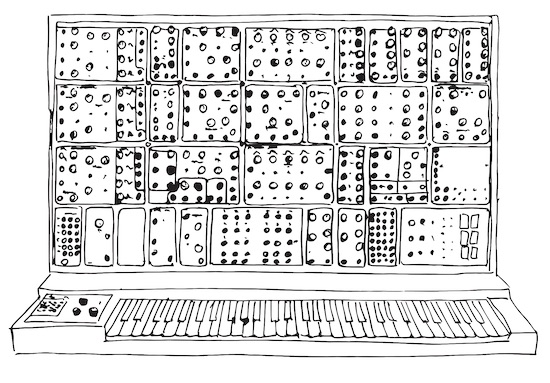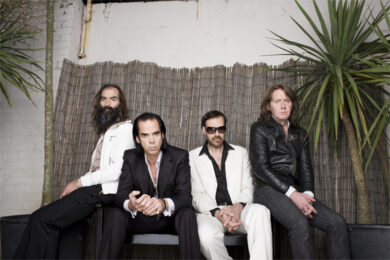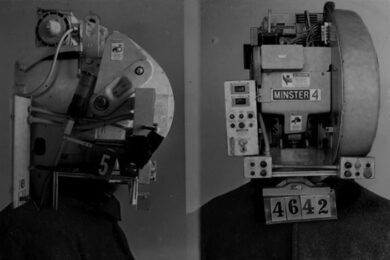All images by Oli Freke
Synth manufacturers have pursued the perfection of electronic music for more than half a century, but in so doing they have arguably sidelined the hitherto wild-west nature of electronic instruments. Since the invention of the modern synthesizer, the majority of manufacturers have followed the basic design principle set by Robert Moog in the early 1960s – several oscillators controlled by a piano-style keyboard and modified with filters, LFOs and envelope generators.
Prior to this, however, there were a large variety of instruments that used all manner of unconventional control mechanisms and sound generation methods, from optical sensing of images to algorithmic generation to novel tuning systems. These arguably led to more experimental electronic music, and by forgetting about these inventions, modern electronic music may have also lost something in the process.
Having just published a book on the history of the synthesizer it might seem strange for me to now accuse them of inhibiting the development of electronic music, but it’s clear that their invention in the early 1960s quickly set the pattern for most of the industry thereafter. Whilst Robert Moog’s successful commercialisation of the synthesizer in 1964 unarguably solved the problem of how to make a flexible electronic musical instrument, it did mean that all the other options pretty much just disappeared overnight.
It was the piano-style keyboard, standard tuning and voltage control of oscillators (and other modifiers) that Moog brought together into the now standard configuration, but there were many ideas that didn’t follow these now familiar conventions.
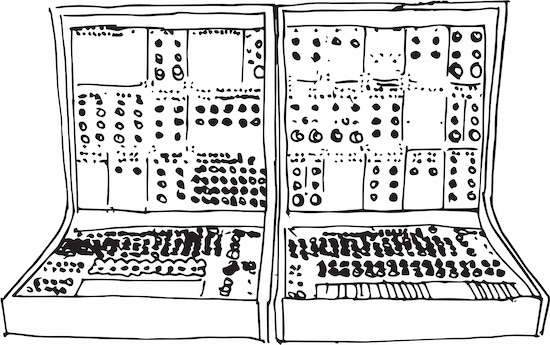
The Buchla 100
The piano-style keyboard is almost the modern synthesizer’s defining feature – to the extent that the word ‘keyboard’ has itself has become a synonym for ‘synth’. But it’s not the only way to exert pitch control over an electronic instrument. Moog’s contemporary Don Buchla actively resisted the keyboard as a control mechanism for his otherwise conceptually similar synthesizer from 1963, the Buchla 100 Series Modular Electronic Music System. Instead, he provided non-piano style touch plates and the engagingly named ‘arbitrary function generator’ which was a sixteen-step sequencer that could control far more than just a pitch sequence, such as complex configurations of filter, envelope, LFOs, and more.
By encouraging composers to engage with sound as something more than just ‘notes on a keyboard’, the result was the kind of intricate sound design last heard in musique concréte. Works such as Morton Subotnick’s, Silver Apples of the Moon (1967) show a futurism completely absent on Wendy Carlos’ otherwise highly influential Switched-on Bach (1968), which used the keyboard-controlled Moog modular as if it were merely a glorified organ.
It’s also notable that during the 1980s and 90s, Don Buchla switched solely to the production of extended function MIDI controllers rather than the sound-generating synthesizers themselves. These included the Thunder, a tactile sense controller; the Lightning, a spatial ‘wand’ controller; and the Lumina Marimba, an electronic marimba with specialised mallets.
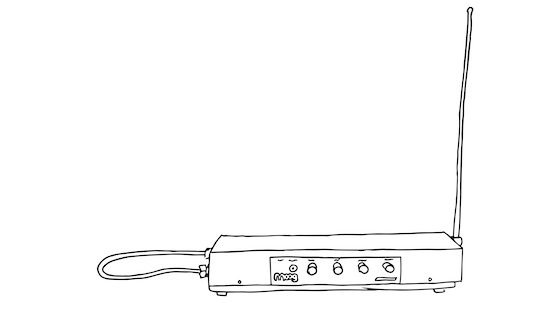
A Modern Theremin
Earlier in the 20th century there were other instruments which didn’t feel the need to wed themselves to the keyboard – or indeed any physical controller at all – such as the Theremin. Whilst there were notable virtuosic players, such as Clara Rockmore in the 1930s, it never found a permanent home in classical or contemporary music, and instead found its novelty-niche as the other-worldly sounds of 1950s sci-fi as typified by Bernard Hermann’s score to The Day the Earth Stood Still (1951).
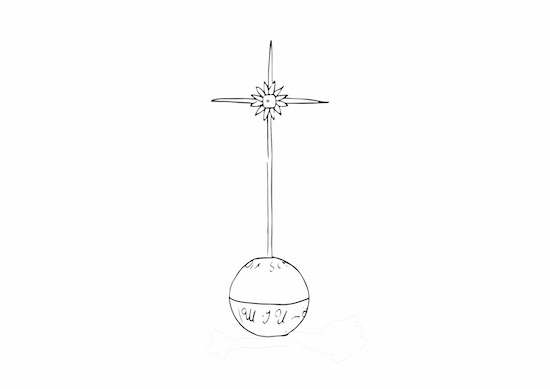
Le Croix Sonore
There was also the dramatic looking Croix Sonore, created by Russian Nikolai Obukhov in 1929, which worked on the Theremin principles of proximity-capacitance sensing. It undoubtedly lent a dramatic theatricality to the sacred rituals of the mystical cult of the Salon de la Rose + Croix in which Obukhov participated.
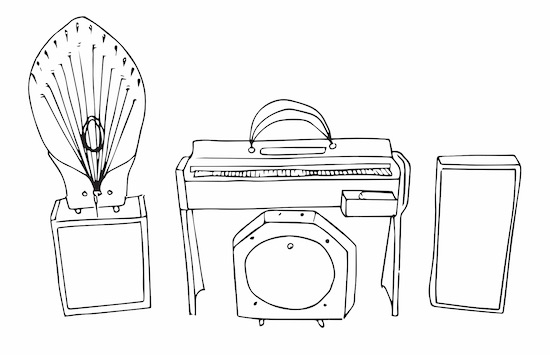
Ondes Martenot
The ondes Martenot (1928) and audion piano (1915), like the Theremin and le Croix Sonore, use the ‘heterodyne’ effect for sound generation, in which a tone in the audible range is derived from the difference between two high-frequency radio valves. Although they did use piano-style keyboards, the ondes Martenot also offered an early kind of continuous pitch glide using a ring-slider. And the Trautonium (1930) used just a metal rail for completely continuous pitch control.
These instruments enabled a more fluid approach to pitch, either as a continuum from which notes were plucked from thin air, as in the Theremin, or gave the freedom to deviate from a tonal centre with the early pitch-glide systems.
Another obvious – but often overlooked – limiting factor of a piano-style keyboard is its assumed use of the twelve-tone equal tempered scale, the standard tuning system employed by western music since the seventeenth century. By restricting synth players to the piano keyboard it can also restrict them to conventional harmonic thinking. Certainly, the early wave of synthesizer music by Jean-Michel Jarre, Vangelis, and Tomita embodies this tonal conventionality, albeit embedded within new and exciting sonic realms for the time.
During the twentieth century, there were some noble attempts to explore microtonality and alternate tunings. One such system is the thirty-one note equal temperament system (31-ET) in which the octave is divided into thirty-one equally spaced pitches instead of the twelve of standard tuning.
The advantages of 31-ET are that the familiar twelve notes are still present, but there are a wider range of sharps and flats enabling interesting new scales or more precise tunings of standard chords than 12-ET is capable of. It also enables the seventh harmonic to be precisely tuned which is not possible in 12-ET.
The scale was discovered several times independently, most notably by the Dutch physicist Christiaan Huygens in 1691. It derived fairly naturally from the then common quarter-comma meantone temperament as the fifth was only 0.19 cent wider. It’s not clear that it was more than just a theoretically interesting tuning system at that time, but it was revived by another Dutchman, Adriaan Fokker, in the 1940s. He built a vast pipe-organ that could realise the 31-note per octave tuning in a full scale instrument. Fokker fervently believed that its perfect seventh harmonic represented the next musical vista to be explored by humanity.
Like Huygens, Fokker was also a renowned physicist, and he had previously worked for Einstein as an assistant, contributed papers on general relativity and is best known for the Fokker-Planck theorem, a differential equation relating to stochastic forces and Brownian motion.
The Fokker-organ, as it was known, had several works written for it whilst installed in the Teyler Museum, Harlem, including Ligeti’s, ‘Continuum’ (1968) before it was moved to the Bamzaal in Muziekgebouw.
An electronic version, the Archifoon, was invented by Herman van de Herst in 1970, a far more portable implementation than its acoustic pipe-organ antecedent, but just as striking visually. The composer Anton de Beer, having commissioned it from the Neonvox company, wrote many works for the Archifoon and was a passionate advocate of the 31-ET tuning system.
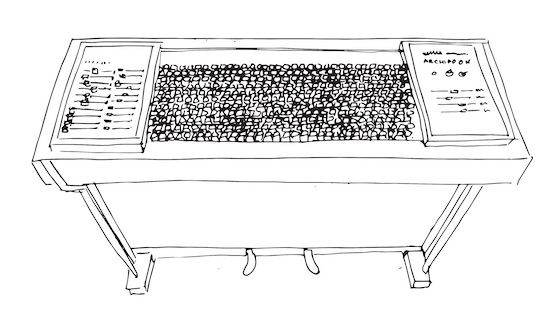
Archifoon
Despite the extension of tonality that the Archifoon, and other such instruments, represented, microtonality has never seriously threatened the dominance of twelve-tone tuning in the west, even in the most adventurous of electronic music (with the possible exception of the Aphex Twin, who brings a great deal of tuning adventurousness into his accessible and popular music).
That it’s not more widespread is a shame. I find that after the initial strangeness of true microtonal music, it becomes fascinatingly bracing and is actually capable of unique emotional effects. And after such listening, going back to standard twelve-tone music can sound very bland and predictable by contrast.
Microtonality is still out there waiting to be fully explored, and the Archifoon has a control interface that could make it a practical alternative – if composers would take a chance and embrace it.
Drawn sound has been a method by which both keyboard control and conventional voltage-controlled oscillators are side-stepped. Drawn sound is a term referring to the conversion of pictures and lines to sound and there were many instruments of this type throughout the twentieth century, but are now largely absent.
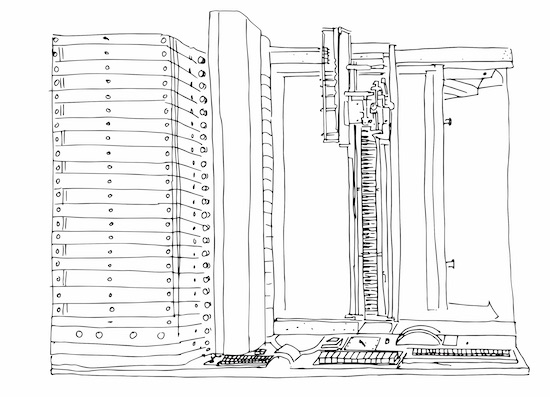
ANS Synthesizer
One of the most fully realised was the ANS Synthesizer, worked on by Russian inventor Evgeny Murzkin between 1937 and 1957. It allowed near-continuous pitch control over ten octaves and was controlled by shining a light through holes scratched in black mastic on glass. As it shone through the holes in the mastic the light triggered corresponding photo-optic sensors on the other side of the glass to generate the appropriate pitch.
The ANS Synthesizer was used by Eduard Artemyev on the score for Tarkovsky’s Solaris, and is named after Alexander Nicholayevich Scriabin after his mystical, theosophical, and occult beliefs regarding the connection between light, colour, and sound.
Amazingly, there is now a mobile app now that emulates the sound of this vast mechanical object – and it sounds intriguingly wonderful.
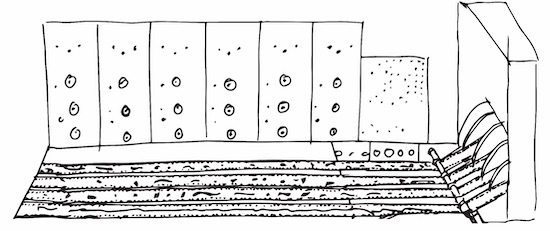
Oramics
A similar system was developed by Daphne Oram from 1962 onwards, having left the BBC Radiophonic Workshop which she had been instrumental in setting up. Called Oramics, it too converted drawn images to sound using ten parallel rows of 35mm photographic film, from which corresponding photo-optic sensors read lines and shapes drawn on them
Oram used it to compose the soundtracks for several film and theatre productions. A large part of its reputation also rests in the concept, and in Oram’s determination in pursuing the creation of it.
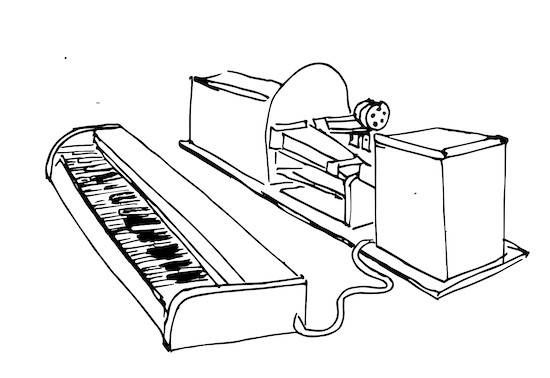
The Radio Organ of a Trillion Tones
Other ‘drawn sound’ instruments include the wonderfully named ‘Radio Organ of a Trillion Tones’ (1931) and the ‘Superpiano’ (1927). These both used a system of rotating disks onto which waveforms were drawn. Again, the optical system converted the drawn waveform into variable voltages which were converted ultimately to sound. The advantage of this system is that waveforms of real instruments could be drawn onto the disks thus enabling a fairly accurate re-creation of the original instrument’s sound. One could almost think of it as an ‘acoustic sampler’, fifty years before the digital sampler was invented.
The Superpiano was the work of Austrian Emerich Spielmann, but its development was interrupted by World War II. Spielmann, with his daughter Anni, fled to America where he tried to continue the project, even getting backing from Einstein who provided a letter praising the instrument’s "tone group" which would "arouse thrilling expectations" in the listener. However, by this time, simpler and more conventional electro-mechanical keyboards like the Hammond Organ and the Neo-Bechstein electric piano were dominating. This left little space for more radical instruments like the Superpiano and other photo-optic instruments such as the Luminaphone (UK, 1925), Photona (USA, 1935), and Foto-Sonor (France, 1955).
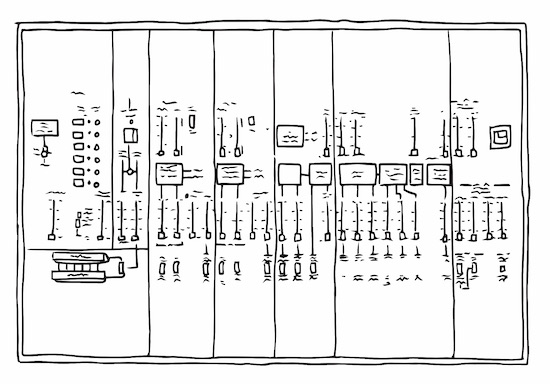
ARP Avatar
Once the modern synthesizer had been invented, many companies looked to popular music for an ‘obvious’ new controller – the guitar. The main problem with this approach is that to ‘sample’ the frequency of a vibrating guitar string, convert it to a control voltage and then send to a synthesizer means an inevitable time delay. At least one cycle of string vibration is required to get the pitch information, and this almost always causes an unplayable lag to contend with.
This did not deter the dominant synth company of the 1970s, ARP, from attempting a guitar synthesizer. Unfortunately, the ‘Avatar’ (1977) cost around $4m to develop and recouped only $1m and is widely blamed for the collapse of the company in the early 1980s.
Similarly, the British company EMS – famous for the VCS3 played by Brian Eno on ‘Virginia Plain’ and the Synthi AKS used by Pink Floyd on ‘On the Run’ – tried their luck with the Synthi Hi-Fli. But that too was an expensive flop for the company (which went bankrupt in the 1980s for a multitude of other reasons).
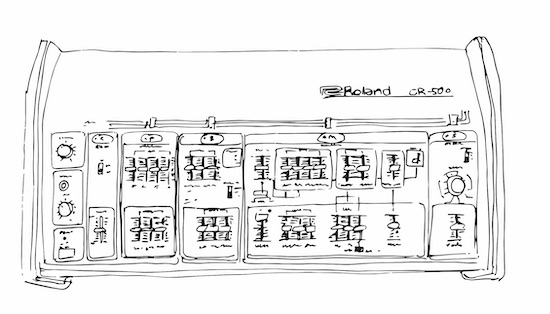
Roland GR-500
The Roland GR-500 and its subsequent models are perhaps the only reasonably successful examples of the genre – having even been used on Bowie’s ‘Ashes to Ashes’ (1978). Perhaps its relative success is down to the fact it could be used as an EQ and effects unit as well as a guitar synthesizer and used a specially built guitar to improve pitch accuracy and latency.
On the whole though, the idea of controlling synthesizers by a guitar has never really caught on. Perhaps it’s not really the look or sound most rock guitarists are going for, or the latency and pitch-tracking problems are simply too great to make it a widely adopted instrument.
…Or ‘just perhaps’ the looks of the Casio DG-20 made the whole idea a laughable nonsense…
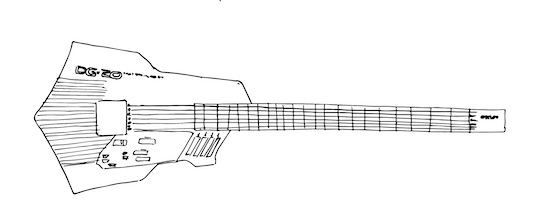
Casio DG-20
All the examples above use human input as the ultimate controller, but my final (and favourite) example does away with even this. The Triadex Muse (1972) was a very early algorithmic compositional music box, designed by the legendary AI researcher Marvin Minksy. Somewhat bizarrely, it was intended to generate background music for situations which might otherwise have employed a transistor radio. A kind of ambient, but non-specific music, was the intent – and it even came with a similar looking box with a built-in synchronised light show. Control was offered by eight sliders with 40 positions with which to set the initial parameters – note intervals, speed, etc., after which it would generate a non-repeating sequence indefinitely. Several composers have used it over the years, including the Tokyo-based Morgan Fisher who synchronises three for his improvisational live shows.
However, it failed to catch on as a sequence of pseudo-random monophonic square waves is probably not the most engaging of musical experiences, in my humble opinion!
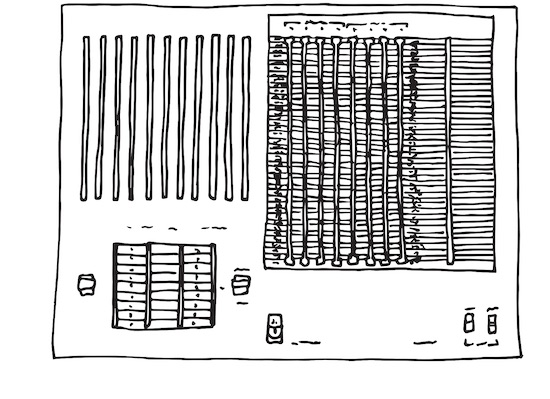
Triadex Muse
So, there we have it. A century of exploration of sound, of which the above examples are but a tiny fraction. But I believe they illustrate that there are many ways to go beyond a piano keyboard for the creation of electronic music, that there are many ways to generate tone than the standard saw, square and sine-waves of analogue oscillators, and that the musical fabric of scales themselves can be woven in a myriad of so-far largely unexplored ways.
But of course, it’s never too late, and with the ever-increasing ingenuity of synth manufacturers, software designers, and the demands of modern musicians and composers it’s become increasingly easy to revive some of these ideas and to explore their potential. Perhaps with the current increase in popularity of modular synthesis and the many new inventive units being made, the paradigm of the synthesizer will once again expand and include some more of the previous century’s under-explored ideas. And this will in turn lead to new and ever more inventive music over the course of this century and beyond.
Synthesizer Evolution: From Analogue to Digital (and Back) by Oli Freke is published by Velocity Press

